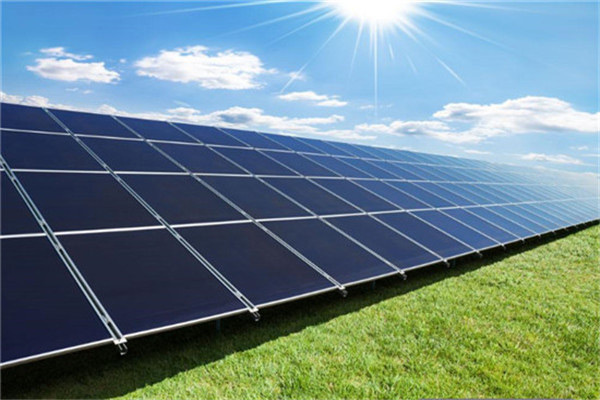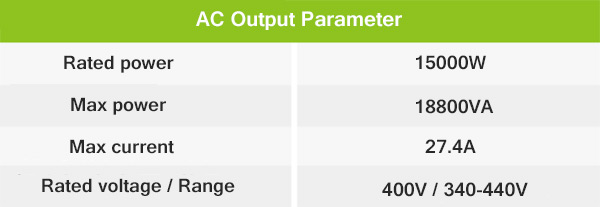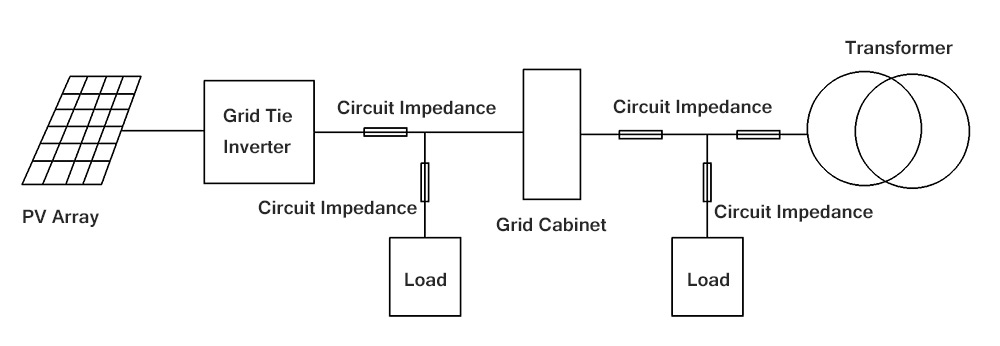When two photovoltaic systems are the same, the components, solar inverters, cables and other relevant components are completely consistent with each other, so are the installation inclination angle and direction. Then, when they are installed on the same location, are their power generation capacity also the same? In fact, there is a close connection between the photovoltaic power generation capacity and the grid voltage. The power generation capacity gap between regions with extremely unstable voltage and regions with stable voltage is around 10% to 20%.

This paper mainly discusses the influence of the grid voltage on the system. The grid voltage can be divided into three conditions, namely low voltage, high voltage and dramatic voltage fluctuation. These three conditions will all influence the system’s power generation capacity.
1. Low grid voltage
In the photovoltaic system, no matter how large the module is installed, it should not exceed the maximum output current of the solar inverter. In case of exceeding, the inverter might be overheated to cause explosion. Under the condition of rated voltage of the grid, the maximum output current can reach the rated output power, but if under the rated voltage, the maximum output current cannot be output at a full load.

Take the 15kW off grid solar inverter for example. Its maximum output current is 27.4A. Under the rated voltage of 400V, the maximum output power is 27.4*400*1.732=18.98kW, which can satisfy overload by 1.1 folds. When the voltage of the grid is relatively low or around 340V, then the maximum output power of the inverter is 27.4*340*1.732=16kW. Under this voltage, no matter how large the module power is, the full-load output is impossible.
2. High grid voltage
There are two conditions which might lead to a slightly high grid voltage. Under the first condition, in order to ensure a normal voltage in areas far away from the transformer, the transformer's output voltage nearby the step-down transformer is usually increased. Under the second condition, when the photovoltaic power generation is too much for the user to use up, the voltage should be increased to transmit the power to faraway places. Due to resistance of the line, the voltage loss is inevitable. Then, the voltage of the solar inverter output side should be increased to get transmitted to the grid.

Loss of the power generation capacity caused by the rising voltage is mainly attributable to three aspects. First, the solar inverter's overvoltage protection results in the inverter’s turn off, and loss of the electric quantity. Second, the inverter's overvoltage load shedding, which is a new technology adopted by the inverter for some parts of the grid whose voltage and is too high. When the grid voltage rises to certain level, the inverter takes the initiative to reduce the power to prevent the solar inverter from being disconnected. This, though reducing the loss of downtime, will also cause loss of certain power generation capacity.
Besides, efficiency loss. When the grid voltage rises, the DC bus voltage will also rise. For example, the DC bus voltage of the 400V AC voltage is around 610V. The rated voltage of the general inverters falls within the scope of the voltage. If the series voltage is around 600V, the PWM duty cycle is close to 1. Under the condition, the inverter's DC conversion part is the highest in efficiency. If the AC voltage rises to 460V, the DC bus voltage should rise to around 700V. When the series voltage is around 600V, the PWM duty cycle is 0.86. Under the condition, the efficiency of the inverter’s DC conversion part will be reduced to around 90%.
There are three methods to reduce the high grid voltage:
- Increasing the output cable path. (The thicker the cable is, the lower the resistance is.)
- Moving the inverter close to the grid connection point. (The shorter the cable is, the lower the resistance is.)
- Manually adjusting the inverter’s voltage scope, which should not be adjusted to be too high. (If exceeding 270V, the other electric devices of the user might get damaged.)
3. Wildly fluctuating voltage
The photovoltaic solar inverter transmits the electricity to the grid. The quality of the grid can influence the inverter as well. In some machinery processing plants, there are large-power devices, such as vehicles, welding machines, and planer-type milling machines, and some electric-arc furnaces. The electric power changes between the on and off of these devices are dramatic, leaving little time for grid adjustment. The voltage changes between 320V and 460V within a short period of time, which are also accompanied by lots of harmonic waves.
The larger the module input power is, the larger the inverter output power is. Meanwhile, the inverter’s output power is linked to the voltage and current. When the grid voltage fluctuates dramatically, the solar inverter’s adjustment capacity is limited, which might cause chaos of the MPPT tracking function and its failure to find out the maximum power point, which will cause loss of the power generation capacity. Worse still, the photovoltaic solar inverter might be restarted, or even the inverter might be damaged to cause downtime and electricity loss.
Conclusions
Serious loss of the power generation capacity can be caused by AC voltage. In the inspection process of the photovoltaic field, the voltage stability of the grid is an indispensable part. When the voltage is stable, the installation is viable. When the voltage is unstable, then one should consider whether adding devices, such as the voltage stabilizer. Otherwise, the system's power generation capacity will be affected.
